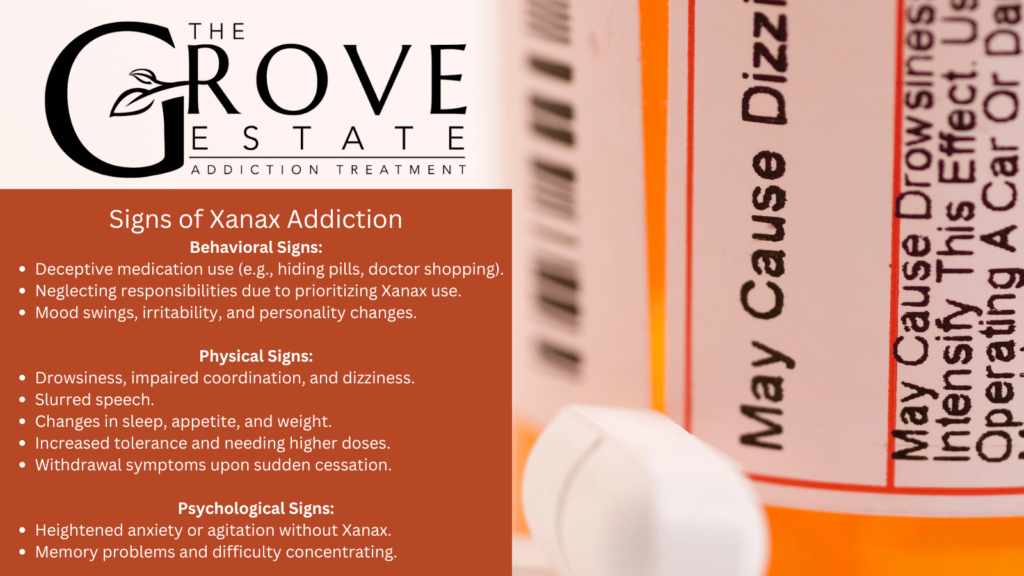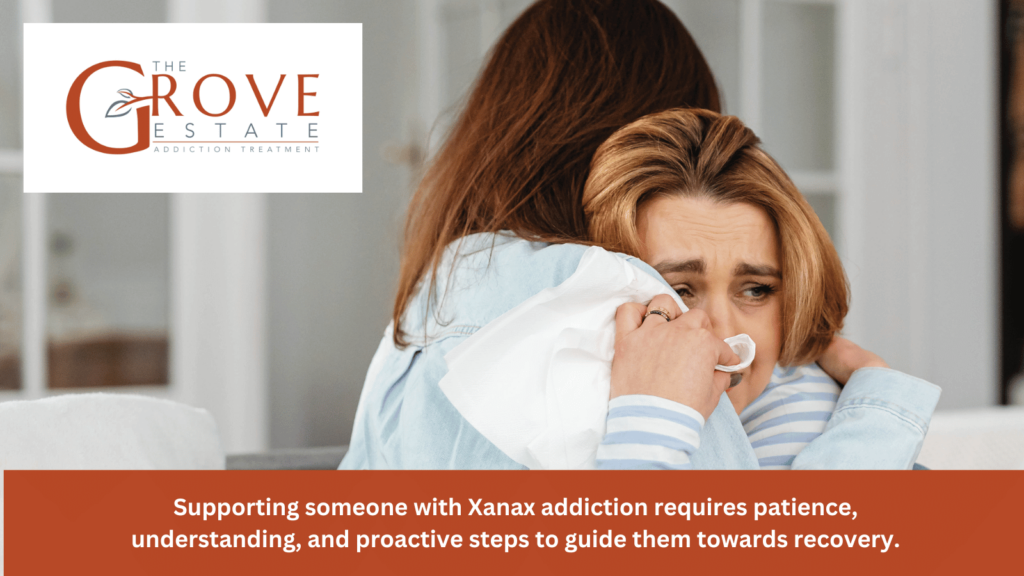Xanax addiction is a pressing issue affecting numerous individuals and families worldwide. According to data from the National Institute on Drug Abuse (NIDA), benzodiazepines like Xanax are among the most commonly misused prescription drugs in the United States, with approximately 5.4 million people aged 12 and older reported misusing these medications in 2020 alone. This misuse can lead to addiction, causing significant challenges for individuals struggling with substance use disorders and their loved ones.
Understanding the nature of Xanax addiction involves recognizing its sedative effects on the central nervous system, which can create a sense of calm and relaxation. However, prolonged use or misuse of Xanax can lead to tolerance, dependence, and ultimately addiction, as individuals may increasingly rely on the drug to cope with stress or emotional difficulties.
Effective treatment for Xanax addiction often involves a combination of medical intervention and behavioral therapies. Medical detoxification, behavioral therapies and motivational interviewing (MI) are crucial in addressing underlying issues contributing to addiction and teaching coping strategies to prevent relapse. Additionally, support groups and aftercare programs play a vital role in providing ongoing support and guidance for individuals navigating recovery from Xanax addiction.

What Is Xanax?
Xanax, also known by its generic name alprazolam, is a medication classified as a benzodiazepine. It is primarily prescribed to treat anxiety disorders, panic disorders, and sometimes as a short-term treatment for insomnia. Xanax works by enhancing the effects of a neurotransmitter called gamma-aminobutyric acid (GABA) in the brain, which helps to calm excessive brain activity and reduce feelings of anxiety and stress. This makes Xanax effective in providing rapid relief from symptoms of anxiety and panic attacks.
Despite its therapeutic benefits, Xanax carries a risk for addiction, even when used as prescribed by healthcare professionals. The addictive nature of Xanax stems from its ability to produce feelings of relaxation and euphoria, which leads to psychological dependence over time. Individuals who use Xanax may develop a tolerance to its effects, requiring higher doses to achieve the desired calming effect. This tolerance escalates into dependence, where the body becomes reliant on Xanax to function normally, increasing the risk of addiction if use is continued without proper medical supervision and monitoring.
How Does Xanax Addiction Develop?
Xanax addiction develops through a complex interplay of physical dependence and psychological addiction. Physically, Xanax addiction often begins with the development of tolerance, where the body adapts to the drug’s effects and requires higher doses to achieve the same level of relief from anxiety or panic. Continued use at increased doses can lead to physical dependence, where the body relies on Xanax to function normally and experiences withdrawal symptoms when the drug is not present.
Psychologically, Xanax addiction can develop due to its calming and euphoric effects, which can create a sense of emotional relief and pleasure. Individuals may begin to use Xanax not just to manage anxiety but also to cope with stress, emotional discomfort, or to induce feelings of relaxation. Over time, this psychological dependence can lead to compulsive use despite negative consequences, as the individual may feel unable to function or cope without Xanax.
Factors contributing to Xanax addiction development can also include underlying mental health issues, genetic predisposition, environmental influences, and past experiences with substance use. These factors can interact and exacerbate the risk of addiction, highlighting the importance of comprehensive assessment and tailored treatment approaches to address both the physical and psychological aspects of Xanax addiction.

What are the Signs of Xanax Addiction?
Signs of Xanax addiction encompass a range of behavioral, psychological, and physical indicators. Here is a list of the signs of Xanax addiction:
Behavioral Signs:
- Secretive or deceptive behavior regarding medication use (e.g., hiding pills, doctor shopping).
- Prioritizing obtaining and using Xanax over responsibilities and interests, leading to neglect.
- Mood swings, irritability, and changes in personality or behavior.
Physical Signs:
- Drowsiness, dizziness, and impaired coordination.
- Slurred speech.
- Changes in sleep patterns, appetite, and weight.
- Developing tolerance and requiring higher doses for desired effects.
- Experiencing withdrawal symptoms when attempting to reduce or stop Xanax use abruptly.
Psychological Signs:
- Heightened anxiety or agitation when unable to access Xanax, indicating psychological dependence.
- Memory problems, confusion, or difficulty concentrating.
What is The Xanax Addiction Rate?
According to the National Institute on Drug Abuse (NIDA), the addiction rate for benzodiazepines like Xanax has been steadily increasing. A survey conducted in 2020 revealed that approximately 5.4 million individuals aged 12 and older reported misusing prescription benzodiazepines within the past month.
Additionally, a study published in the Journal of the American Medical Association (JAMA) Psychiatry found that between 1996 and 2013, the number of adults filling benzodiazepine prescriptions nearly doubled. This rise in prescriptions has contributed to the growing prevalence of Xanax addiction and abuse, showing the urgent need for increased awareness, education, and intervention strategies to address this public health concern.
What are The Dangers of Xanax Addiction?
The dangers of Xanax addiction encompass both short-term and long-term risks that can significantly impact an individual’s health and well-being. Xanax addiction also poses a heightened risk of overdose, especially when combined with other substances like alcohol or opioids. The simultaneous use of Xanax with alcohol or other central nervous system depressants potentiates their effects, leading to respiratory depression, coma, and even death.
According to the Centers for Disease Control and Prevention (CDC), benzodiazepines like Xanax were involved in nearly 11,500 overdose deaths in the United States in 2020, highlighting the critical need for caution and awareness regarding the dangers of Xanax addiction and polydrug use. The dangers of Xanax addiction encompass a range of risks that necessitate prompt intervention, treatment, and support to mitigate potential harm and promote recovery. Here is a list of the risks of Xanax addiction:
Short-Term Risks:
- Drowsiness
- Confusion
- Impaired coordination
- Memory problems
- Increased risk of accidents and injuries
- Impaired cognitive function and decision-making
Overdose Risks:
- Potentiated effects when combined with alcohol or other CNS depressants
- Respiratory depression
- Coma
- Death
Long-Term Risks:
- Tolerance, dependence, and withdrawal symptoms
- Cognitive impairments
- Memory problems
- Mood disorders
- Increased risk of developing substance use disorders

What are the Withdrawal Symptoms from Xanax?
Withdrawal symptoms from Xanax are severe and potentially dangerous, emphasizing the importance of medically supervised detoxification for safety and comfort. Here’s a detailed list of withdrawal symptoms commonly associated with stopping Xanax use:
- Anxiety: Heightened feelings of anxiety and restlessness.
- Insomnia: Difficulty falling asleep or staying asleep.
- Irritability: Increased irritability, agitation, and mood swings.
- Tremors: Shaking or trembling hands or limbs.
- Muscle Pain: Aches, pains, and muscle stiffness.
- Headaches: Persistent headaches or migraines.
- Sweating: Excessive sweating, especially at night.
- Nausea and Vomiting: Digestive discomfort, nausea, and vomiting.
- Increased Heart Rate: Palpitations and rapid heartbeat.
- Hallucinations: Visual or auditory hallucinations in severe cases.
- Seizures: Risk of seizures, particularly with abrupt cessation or high doses.
What are the Treatment Options for Xanax Addiction?
Xanax addiction treatment typically involves a comprehensive approach that addresses physical, psychological, and behavioral aspects of addiction. Here’s an overview of available treatments for Xanax addiction:
Detoxification (Detox)
Detoxification is the first step in treating Xanax addiction, focusing on safely managing withdrawal symptoms under medical supervision. Healthcare professionals may use tapering techniques, medications, and supportive care to help individuals navigate the detox process comfortably and safely.
Inpatient Rehabilitation
Inpatient rehabilitation programs provide intensive, round-the-clock care in a residential setting. These programs offer structured therapy, counseling, support groups, and holistic approaches to address the underlying causes of addiction and develop coping strategies for long-term recovery.
Outpatient Programs
Outpatient programs offer flexibility, allowing individuals to receive treatment while living at home. These programs include regular therapy sessions, counseling, medication management, and support groups tailored to the individual’s needs and schedule.
Therapy and Counseling
Therapy and counseling are fundamental components of Xanax addiction treatment. Cognitive-behavioral therapy (CBT), dialectical behavior therapy (DBT), and motivational interviewing (MI) are commonly used to help individuals change harmful thought patterns, behaviors, and beliefs associated with addiction. Counseling also addresses underlying issues contributing to addiction and teaches healthy coping mechanisms for stress and cravings.
How to Prevent Relapse: Strategies for Long-Term Recovery
Preventing relapse is a critical aspect of long-term recovery from Xanax addiction. After completing a treatment program, individuals can adopt various strategies to maintain sobriety. These may include developing a strong support network of family, friends, and peers who understand and encourage recovery efforts. Engaging in regular therapy sessions and counseling can also provide ongoing support and help individuals address underlying issues that may contribute to relapse triggers.
Additionally, participating in aftercare services such as sober living arrangements, outpatient programs, and support groups like Narcotics Anonymous (NA) or SMART Recovery can offer continued guidance, accountability, and peer support throughout the recovery journey. These strategies, combined with healthy lifestyle choices, coping skills, and relapse prevention techniques learned during treatment, play a crucial role in sustaining sobriety and achieving long-term recovery from Xanax addiction.

How to Support Someone with Xanax Addiction?
Supporting someone with Xanax addiction requires patience, understanding, and proactive steps to guide them towards recovery. Here’s advice for friends and family on how to support a loved one struggling with Xanax addiction:
- Encourage Professional Help: Urge your loved one to seek professional treatment from addiction specialists or healthcare professionals experienced in treating Xanax addiction. Emphasize the importance of receiving comprehensive care, including detoxification, therapy, counseling, and aftercare services.
- Participate in Family Therapy or Support Groups: Consider joining family therapy sessions or support groups designed for families of individuals struggling with addiction. These sessions provide education, guidance, and a safe space to express feelings, address family dynamics, and learn effective communication and coping strategies.
- Educate Yourself: Learn about Xanax addiction, its effects, and available treatment options. Understanding the challenges your loved one faces can help you provide informed support and empathetic guidance throughout their recovery journey.
Can genetic factors influence the development and severity of Xanax addiction?
Genetic factors do contribute to the risk of developing addiction, including Xanax addiction. Variations in certain genes related to neurotransmitter pathways and drug metabolism influence an individual’s susceptibility to addiction and their response to Xanax.
Are there specific gender-based differences in Xanax addiction prevalence, symptoms, or treatment outcomes?
Gender differences exist in Xanax addiction, with women being more likely to develop dependence and experience withdrawal symptoms. Additionally, women will have different treatment responses and needs compared to men, highlighting the importance of gender-specific approaches in Xanax addiction treatment.
How do cultural perceptions towards anxiety affect Xanax addiction rates?
Cultural attitudes towards anxiety, mental health, and medication use significantly impacts Xanax addiction rates. Sociocultural factors, stigma, access to healthcare, and cultural norms surrounding medication use may influence the prevalence, recognition, and treatment-seeking behavior for Xanax addiction across diverse communities.
How does Xanax interact with other substances like drugs and alcohol?
Polysubstance use, particularly combining Xanax with other substances like alcohol or opioids, increases the risk of overdose, respiratory depression, and other adverse effects. It also complicates the treatment of Xanax addiction, as addressing multiple substance dependencies requires comprehensive assessment, integrated treatment approaches, and tailored interventions to promote recovery.
How does Xanax withdrawal affect the body?
Xanax withdrawal can be intense and uncomfortable, manifesting as anxiety, insomnia, sweating, and muscle cramps. In severe cases, withdrawal can include seizures and psychosis. The intensity of these symptoms often necessitates medically supervised detox to ensure safety and comfort.
Medical professionals in residential detox programs can offer medications and support to mitigate these symptoms, making the detox process less daunting and more manageable.
What are the long-term effects of Xanax use?
Long-term use of Xanax can lead to significant physical and psychological effects, including dependency, memory impairment, and emotional blunting. Users may also experience decreased cognitive function, making it difficult to perform tasks that require concentration and coordination.
Recovery from long-term Xanax use often involves comprehensive treatment strategies that can include Hydrocodone addiction treatment if multiple substances are involved, highlighting the need for specialized care to address all aspects of a person’s addiction.

Share This Post



